How the demand for sand is killing rivers
- Published
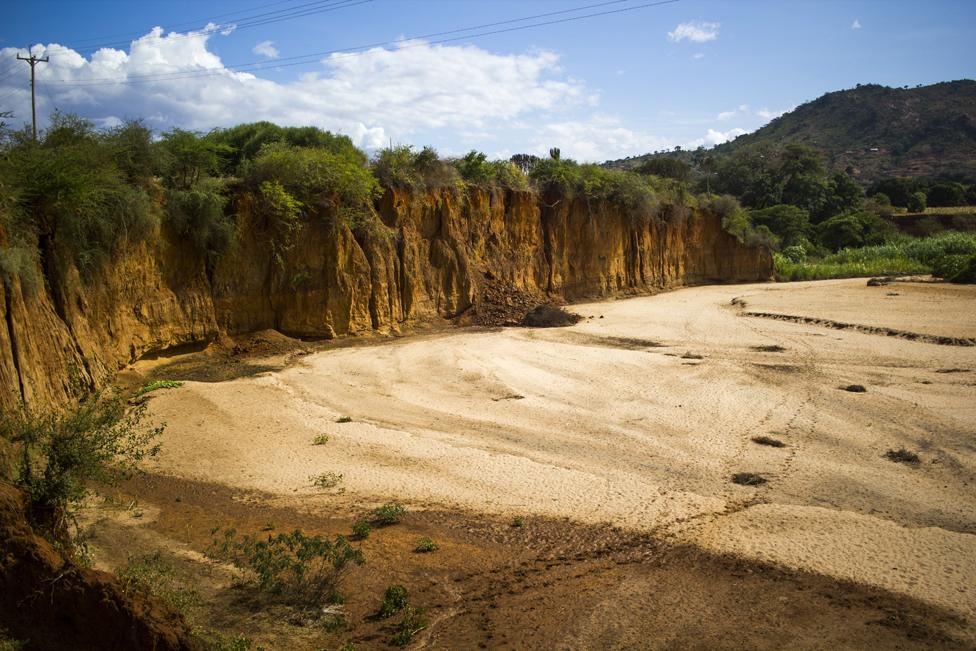
You cannot have concrete without sand. River beds are being dug up across Africa to fuel a building boom, with little thought for what this means for the health of the river, and those who depend on it, as Harriet Constable found in Kenya.
Sand. The word conjures happy holiday memories: building castles from it; watching nervous crabs scuttle across it; digging giant holes in it, and then hiding in them and leaping out at opportune moments to terrify unknowing relatives. Sand is the make up of glittering beaches, hundreds of thousands of years of weathering to create millions and millions of tiny, sparkling, and yet seemingly insignificant particles. Sand is infinite, surely. And yet the world is running out.
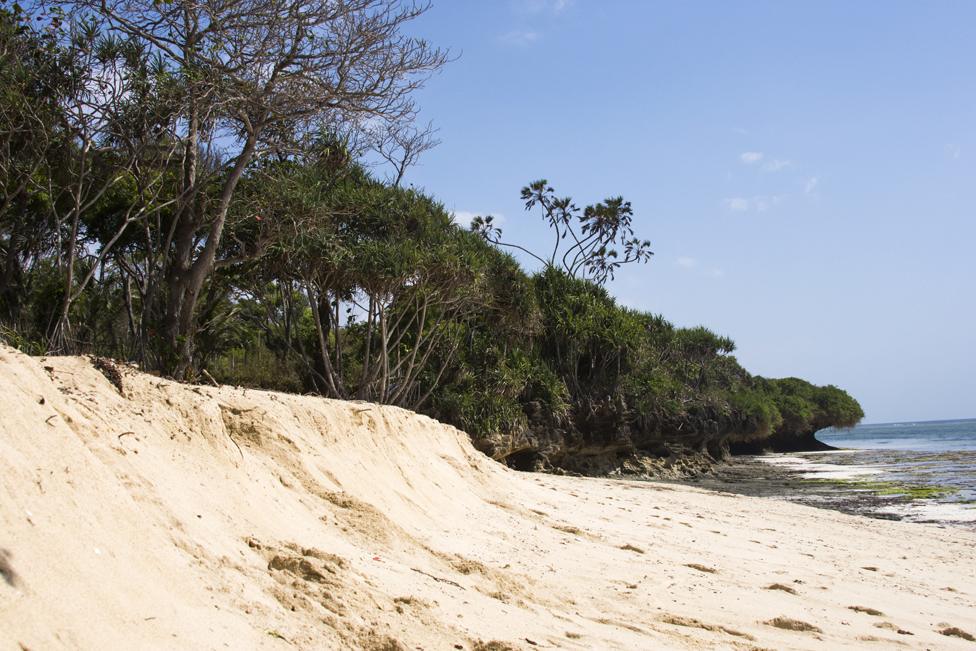
A beach in Tiwi, along Kenya's coast, where sand dredging has caused the beach to subside and start to disappear - it's a key nesting ground for sea turtles
It's obvious when you think about it. All the major building materials - concrete, bricks, glass, are made using sand. Exploding population numbers and the knock on need for development have made sand the second most used natural commodity on the planet after water. Billions and billions of tonnes are being used across the globe.
So much so that a UN report estimated global sand use in 2012 alone could have created a concrete wall 27m high by 27m wide around the equator. We need not go to the beach to be surrounded by sand - our cities are essentially giant towering sand castles disguised in concrete.
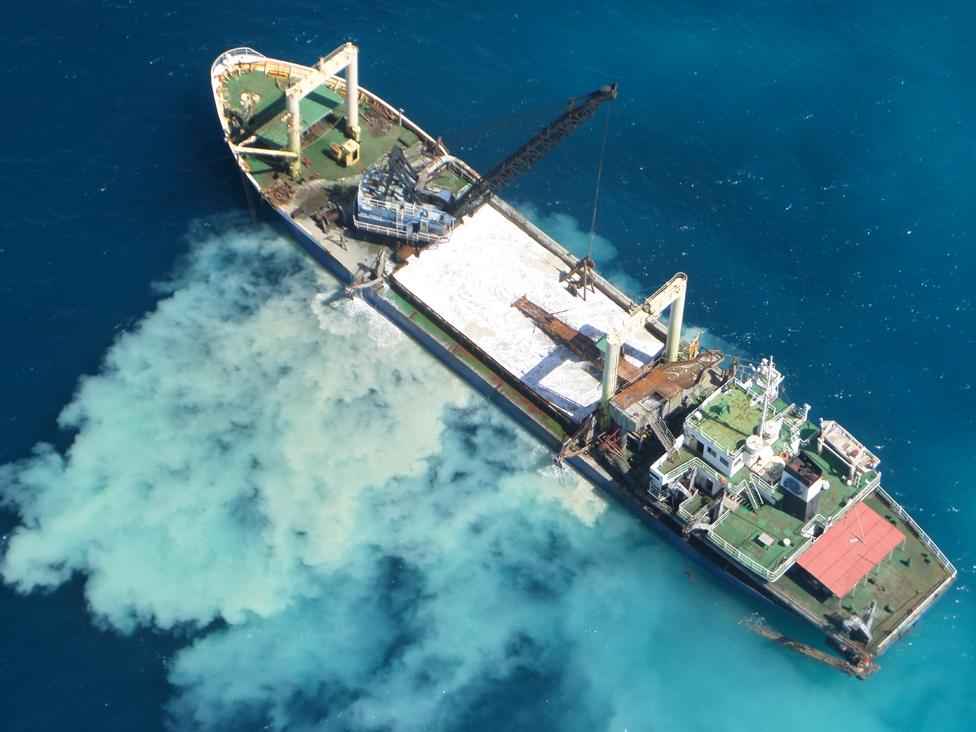
A sand dredger just beyond the reef in Tiwi kicks up giants plumes of sand in the ocean - it settles over coral, suffocates fish, and muddies the waters for sea turtles who feed on the seagrass at the bottom
The sand used for construction comes mainly from riverbeds and oceans. Desert sand, it turns out, is too smooth for the mix. Huge projects quickly exhausted Dubai's marine sand supply, so, despite being a city built on sand, it now imports the material from Australia. The irony: sand has become such a precious commodity it is literally being sold to the Arabs.
Innocent as sand may seem, the immense demand for it is causing loss of livelihoods, loss of ecosystems and even deaths.
In India, a black market for sand harvesting has emerged, operated by violent sand mafias. In China, the country's biggest freshwater lake - Poyang Lake - is drying up due to sand dredging. Hundreds of locals rely on the lake for fish, as do the millions of migratory birds that stop here each year.
In Kenya, sand dredging from the riverbeds of poor rural counties like Makueni is leaving some communities without access to water.
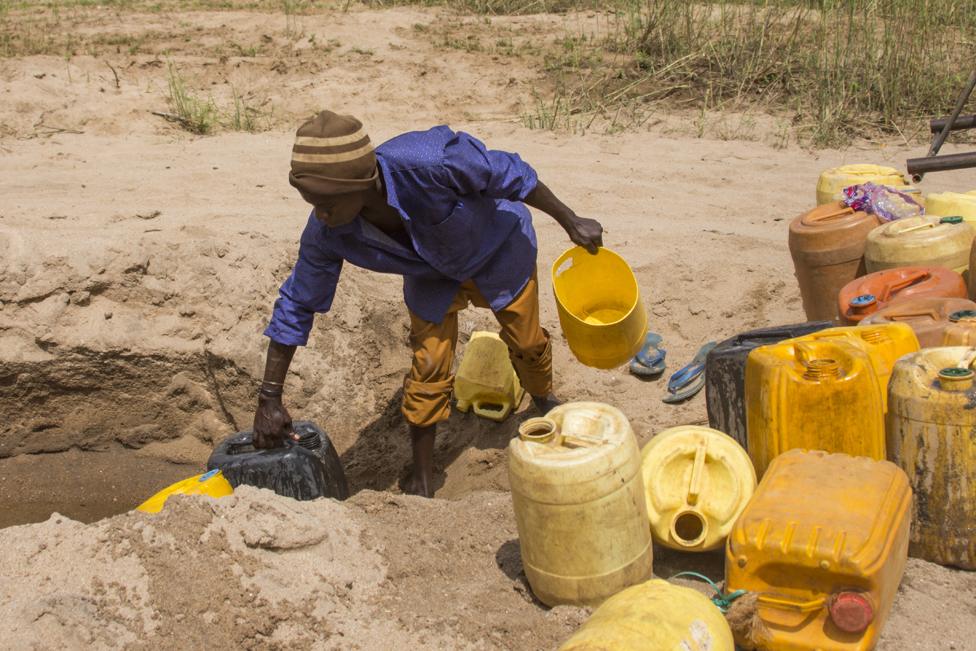
During the rainy season, water percolates into the sand and is stored underground - then during the dry season, locals dig small wells in the sand to get water

Find out more
From Our Own Correspondent has insight and analysis from BBC journalists, correspondents and writers from around the world
Listen on iPlayer, get the podcast or listen on the BBC World Service or on Radio 4 on Saturdays at 11:30 BST

With the country's population expected to double in the next 40 years, massive infrastructure projects like Kenya's new Standard Gauge Railway are necessary. But they need millions of tonnes of sand. Kenya's coast and inland rivers have all been exploited in recent years, but the effect in Makueni has been particularly acute.
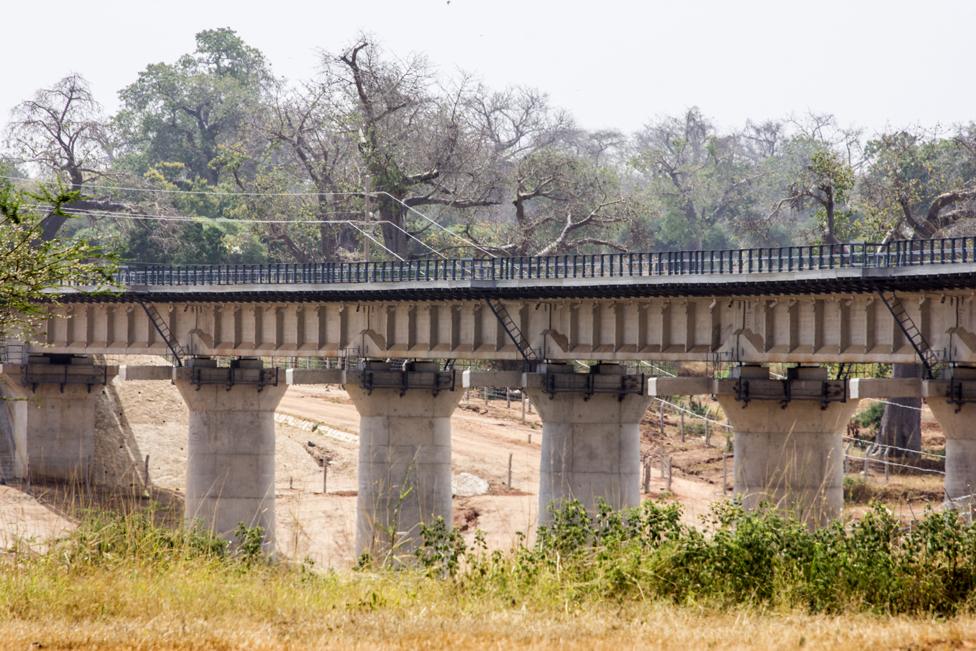
Kenya's new Standard Gauge Railway (SGR) spans 609km from Mombasa to Nairobi, and its construction requires millions of tonnes of sand
Throughout the year, temperatures in Makueni soar to over 35C (95F). Seasonal, sand-filled rivers snake their way through the arid land. During the rainy season, water percolates through and is stored underneath. During the dry season, the population of nearly one million people dig holes in the sand to extract water to survive. However, when enough sand is harvested, only the bedrock remains, and during the rainy season the water simply rushes across it. No water is stored.
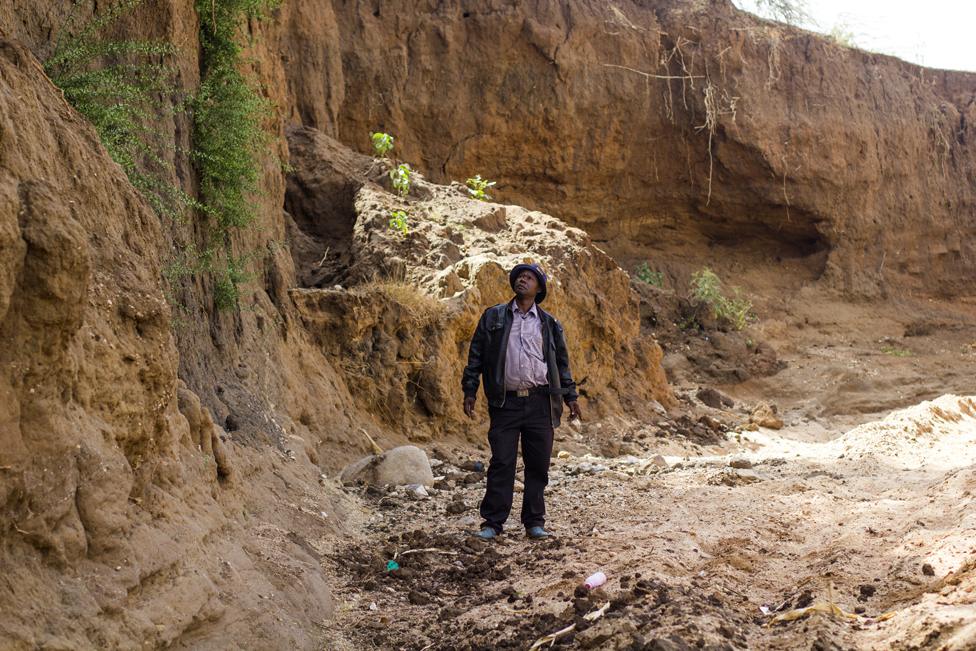
Anthony Mua Kimeu stares at the steep cliffs of the Kilome Ikolya "dead" River
I visited several sand harvesting sites across the county earlier this year. "We call this the dead river," a local called Anthony told me, staring over the steep, reddish-brown cliff edge into the barren riverbed at Kilome Ikolya River in Makueni.
A couple of years ago this river was flat. Now, there is sheer drop of about 10m from the top of the bank to the riverbed. Tree roots jut out awkwardly from the cliff face, and along the dry, meandering river, bedrock sticks out of the ground, glistening in the sunshine. "No-one can get water here now," Anthony said.
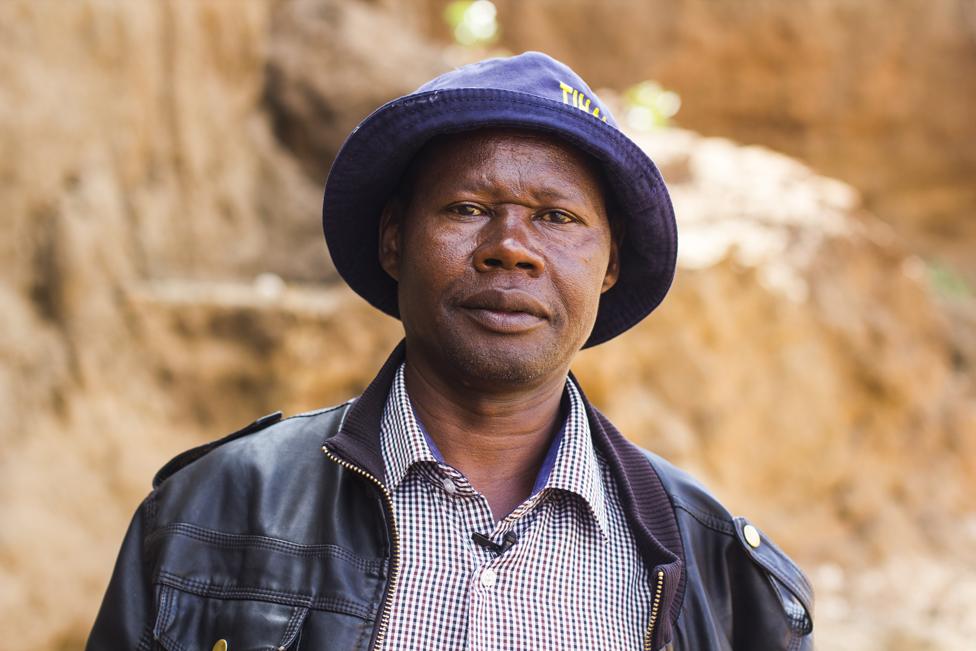
"No-one can get water here now," says Anthony, a farmer
For some, sand is life, and for others, sand is money. In a poor area with few employment opportunities, the reality of what desperate humans will do is stark.
Local Police Officer Geoffrey Kasyoki was well known in his community for trying to stop illegal sand harvesting in Makueni. In February 2011 he was set upon by a group of young men in broad daylight. They shot him with poisoned arrows, crushed his head and slashed his skin.
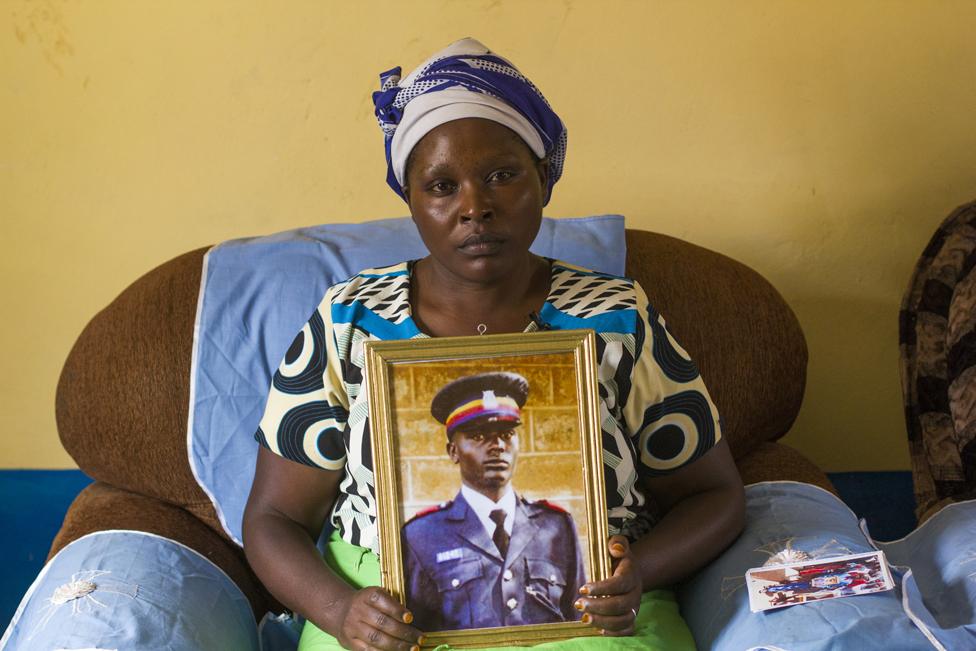
Irene Nduku Kasyoki holds up a portrait of her late husband Geoffrey, a police officer who died trying to defend his community's sand
Standing over her husband's grave, his widow Irene told me, "He was killed to send a message to the community from the sand harvesters: do not try to stop us". Her chest heaved in and out, shuddering with sobs, and she reached out to touch the sandy mound of earth under which he is buried.
As Anthony and I walked further along the riverbed, we came across harvesters labouring under the baking midday sun, shovelling sand into a pile ready for a truck to collect it.
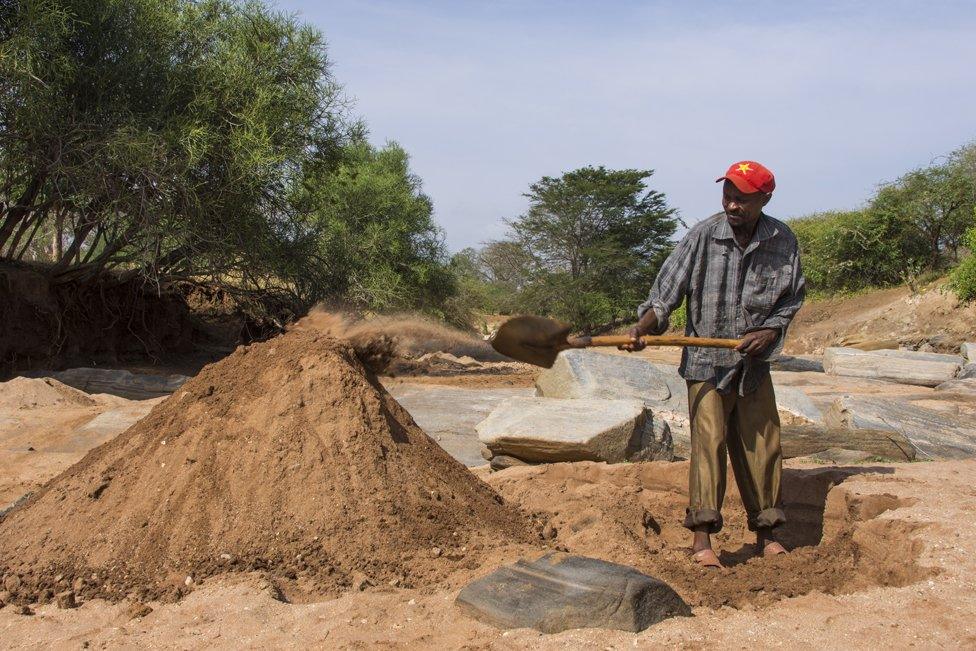
Harvester Richard Mutinda shovels sand into a big pile to be collected by trucks later - up to 100 tonnes of sand is taken from this stretch of the Nthange River daily
While I watched and wondered whether sand could soon become the stuff of distant childhood memories, others around me had more pressing concerns. For them, sand could mean the difference between eating and going hungry, whether they'd have drinking water or not, or whether they'd ever see their loved ones again.
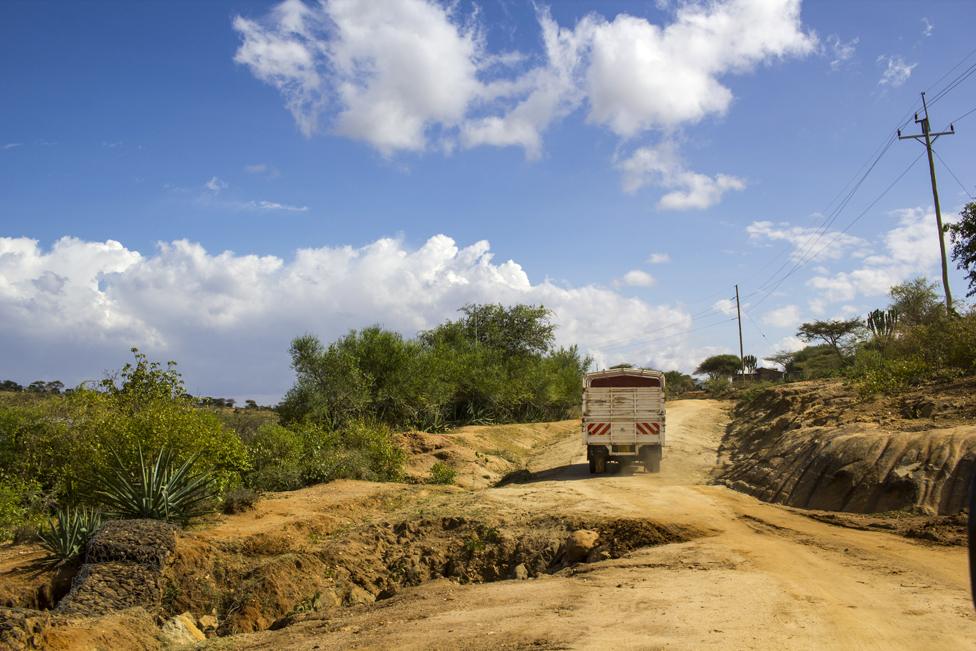
Photographs by Rachel Reed

Join the conversation - find us on Facebook, external, Instagram, external, Snapchat , externaland Twitter, external.